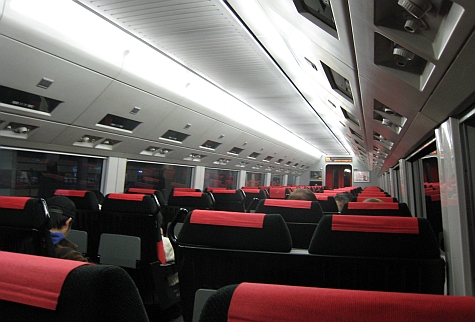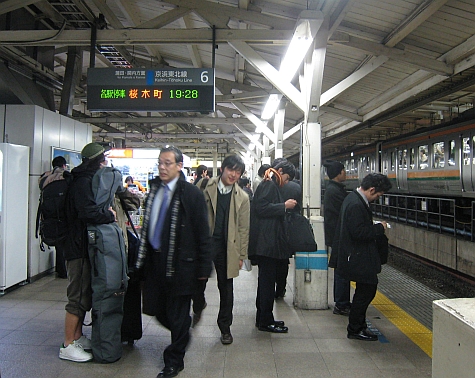As with most huge airports, passengers debark from the aircraft to face a long walk to the terminal.
Speedwalks in the terminal make the walk easier. I passed by thermal monitors on the lookout for fevers, right before the lineups at immigration and luggage carousels.
Exiting the baggage area, my first stop takes me on a turn right. Since my mobile phone from Canada hasn’t worked in Japan, I order a local mobile phone via ANA Skyweb for pickup, a week before the scheduled flight.
At the end of the terminal, the Ana sky porter had a mobile phone with my name on a list.
Turning around to come back through the centre of the terminal, I passed by the main escalator down to the trains.
There’s another wing of the terminal farther along, but my destination was the ATMs just to the left. Continue reading “2009/02/22 Narita Airport, Narita Express, Tokyo Station, Tamachi Station“





